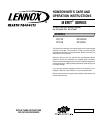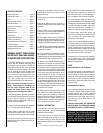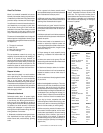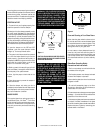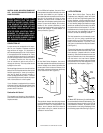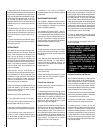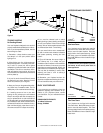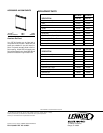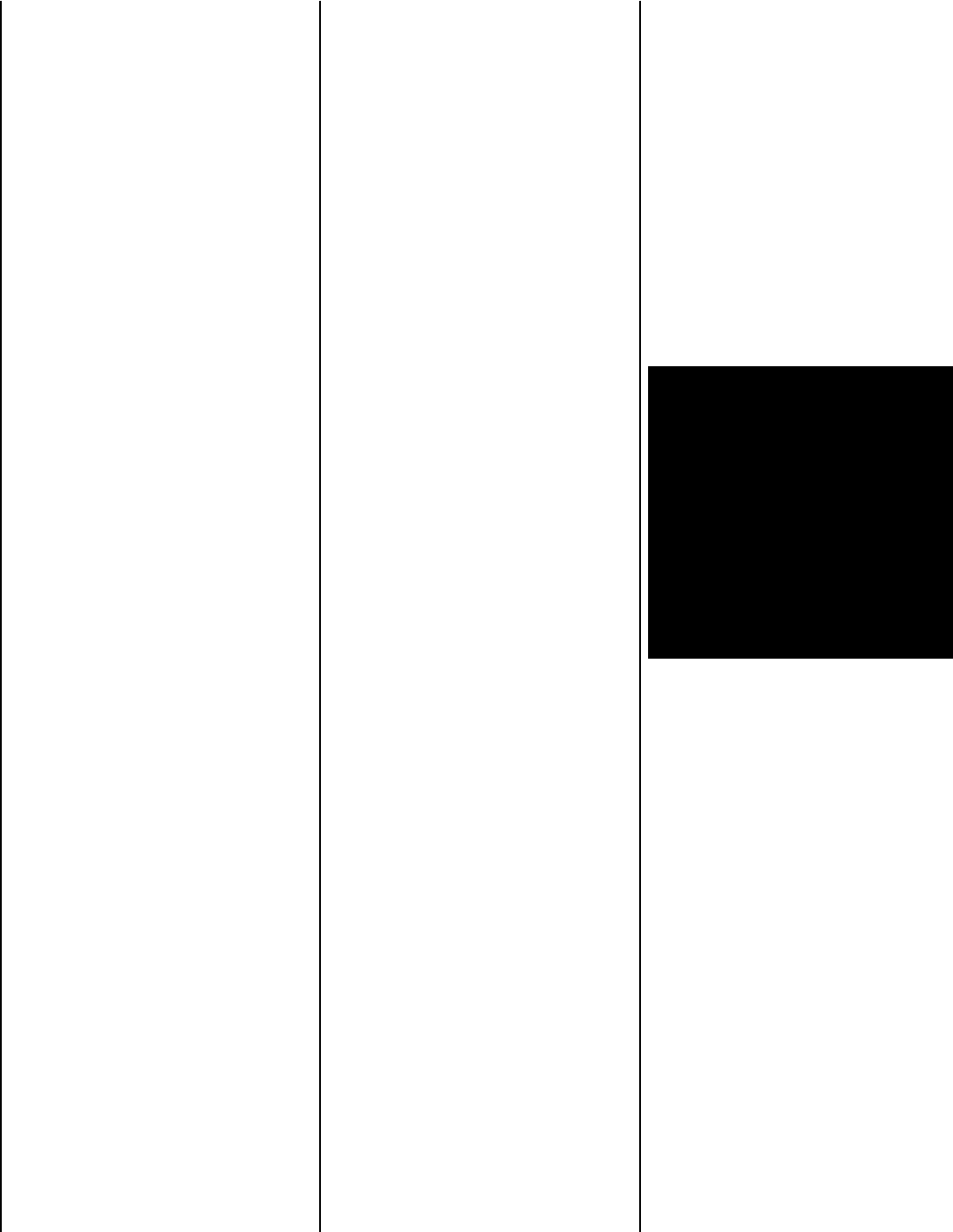
6
NOTE: DIAGRAMS & ILLUSTRATIONS NOT TO SCALE
If conditions 1, 2 or 3 occur, the refractory
should be replaced. For minor defects, repair as
noted above.
MAINTENANCE GUIDELINES
Your fireplace is designed to operate trouble-
free with minimum maintenance. However, like
any fine appliance, it deserves and requires
some housekeeping attention.
Your fireplace will perform better – and cer-
tainly look more attractive to family and friends
– if it is cleaned before each use. Before the first
seasonal use in Autumn and after the last fire in
Spring, it is important to inspect the fireplace
system carefully. We recommend at least two
complete fireplace inspections a year.
Before Each Use
1. Clean the firebox of excessive ashes. Some
owners prefer to leave a small layer to insulate
the cold refractory below the grate which helps
fire starting.
If your particular model fireplace has a factory
supplied grate attached, it is permissible to
remove the grate for cleaning; however, the
grate must be re-attached to the fireplace be-
fore the next burn.
2. Keep the fireplace screens clean so combus-
tion air flows freely.
3. Spot check the brick-like refractory for small
cracks. Heat from the fire expands it slightly.
When it cools, it contracts.
Twice A Year Check-Up
Normally, twice a year, you should inspect your
fireplace following this list:
1. Inspect the opening in your chimney top and
remove any debris that could clog it. The cap is
usually held in place by four (4) screws, which
remove easily for checking or cleaning the full
length of the flue from above. Remove the
chimney top while wearing gloves to guard
against any sharp metal edges.
2. Inspect the entire flue from the top down for
obstructions such as birds nests, leaves, etc.
This may be done by using a flexible handled
chimney cleaning brush. If the chimney con-
tains offset/return elbows; a soft brush cleaning
from the top down to any elbow and then from
the firebox up to the offset/return section is the
proper method. The beam from a powerful
flashlight will help in this inspection.
1. Remove the two (2) screws from one of the
side lintel extension, leaving the lintel extension
on the other side attached to the lintel frame.
Only lower the end of the lintel extension closest
to the closed end (refractory wall) of the CPF-
38. Aligning the desired holes in the lintel
extension with the holes in the lintel frame and
reattach using one (1) of the screws previously
removed.
2. Remove the two (2) screws from the lintel
extension on the other side of the fireplace.
Lower the whole lintel extension to the desired
holes and reattach using the screws just re-
moved.
3. On the lintel extension first lowered, realign
the holes as necessary then insert and tighten
the remaining screw.
REFRACTORIES
All fireboxes contain a furnace refractory floor.
Some models also have refractory sides and
backs. These refractories are reinforced with
steel, but can be broken by improper use.
Dropping logs on the bottom refractory and
building fires directly against the refractories
can cause premature burnout of these compo-
nents. It may easily be repaired or replaced at
costs far below repair and maintenance for
masonry fireplaces.
Proper care and “burn-in” of the firebox will
prolong the period of enjoyment without exten-
sive maintenance. For the first few uses, build
small fires – not roaring infernos. The materials
used in the refractories contain and absorb
moisture. It is important to “cure” the refracto-
ries by building only modest fires.
Under normal usage, it is expected that hairline
cracks will appear in the refractory surface.
These hairline cracks do not affect the safe
operation of the fireplace.
Refractories should be replaced when:
1. The crack opens more than 1/4" (19 mm).
2. Pitting in the surface is extensive and pits
become deeper than 3/16" (4.76 mm).
3. Any piece of refractory larger than 2" (51 mm)
in radius and 3/16" deep becomes dislodged.
If your refractory has a crack less than 1/4"
(19 mm) in width, a simple Refractory Patch
Kit, Model RPK, can easily be used to fill the
crack and repair the refractory.
3. Look up from inside the fireplace (damper
open) to see any obstructions in the lower flue
area. If present, shut the damper and glass doors
(if installed) to seal the firebox and contain any
soot that might fall. If your do not have glass
doors installed, a damp sheet covering the fire-
place opening and sealed with masking tape will
do. Then clean the flue from the top down (if an
offset system, clean per Step 2) using a proper
size chimney brush with flexible pole sections.
Don’t open the doors or remove the sheet until all
soot has settled. Vacuum, don’t sweep.
4. Check the metal flashing and seals around
your chimney. Seal any cracks or loose nailhead
openings to prevent roof leaks.
5. Clean the firebox thoroughly by using a soft
brush or equivalent.
WARNING: CONTINUED OVER FIRING
CAN PERMANENTLY DAMAGE YOUR
FIREPLACE SYSTEM. SOME EXAMPLES
OF OVERFIRING ARE:
• BURNING QUANTITIES OF SCRAP
LUMBER, PINE BRANCHES, PAPER OR
CARDBOARD BOXES WHICH EXCEED
THE VOLUME OF THE NORMAL LOG
FIRE.
• BURNING TRASH, CHEMICALS OR
CHEMICALLY TREATED COMBUS-
TIBLES.
Creosote Formation and Removal
When wood is burned slowly, it produces tar and
other organic vapors, which combine with ex-
pelled moisture to form creosote. The creosote
vapors condense in the relatively cool chimney
flue of a slow-burning fire. As a result, creosote
residue accumulates on the flue lining. Creosote
makes an extremely hot fire when ignited.
The chimney should be inspected at least twice
yearly during the heating season to determine
if a creosote build-up has occurred.
If creosote has accumulated, it should be re-
moved to reduce the risk of a chimney fire.
If creosote build-up is found, do not use
chemical chimney cleaners that are poured on
a hot fire. The manufacturer considers them
dangerous and they generally only work on the
flue section nearest the fire, leaving the rest of
the flue unaffected. It is best to take the time to
clean the flue as previously described or have
the chimney professionally cleaned by a quali-
fied chimney sweep.



